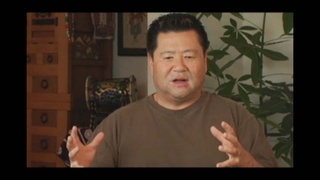Interviews
Benefits of living in the United States (Japanese)
(Japanese) By living here rather than in Japan, I am able to play the taiko. To me, I can have more of my dream than being over there. I feel like I can do this only by living here. I guess you call it the “American Dream.” You know, it seems to me that the more you put in the more you get out. It makes it all worth trying hard.
Come to think of it, if I were in Japan, I would probably not be beating on a taiko at this age. I would probably have quit a long time ago. You know, your parents and siblings would probably criticize you and might say, “You are still beating on a taiko, like a fool.” There are so many critics and I would probably have given up a long time ago. But over here, this thing creates its own meaning. I have been able to come this far because people seem to get enjoyment out of my doing this.
Date: April 1, 2005
Location: California, US
Interviewer: Ann Kaneko
Contributed by: Watase Media Arts Center, Japanese American National Museum.




